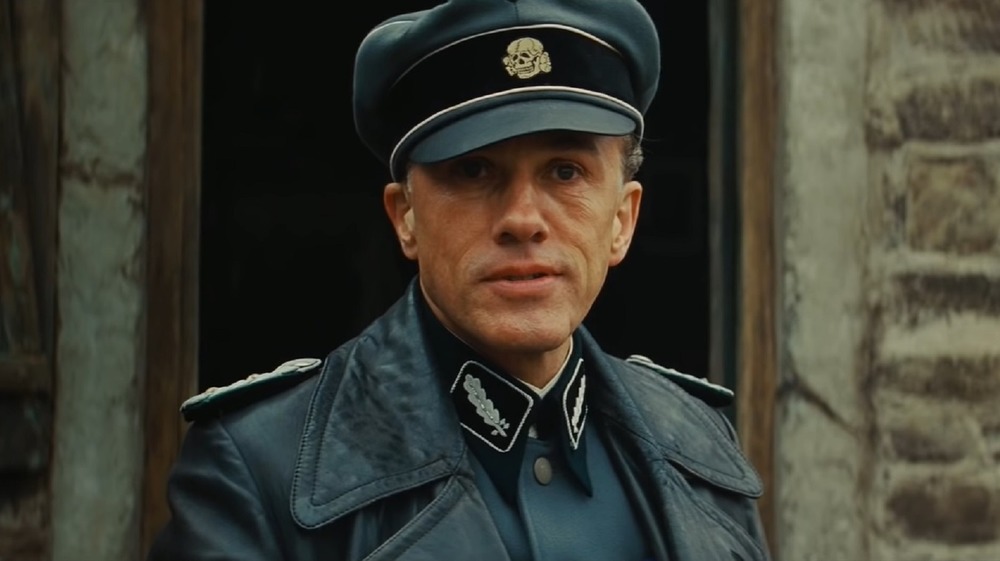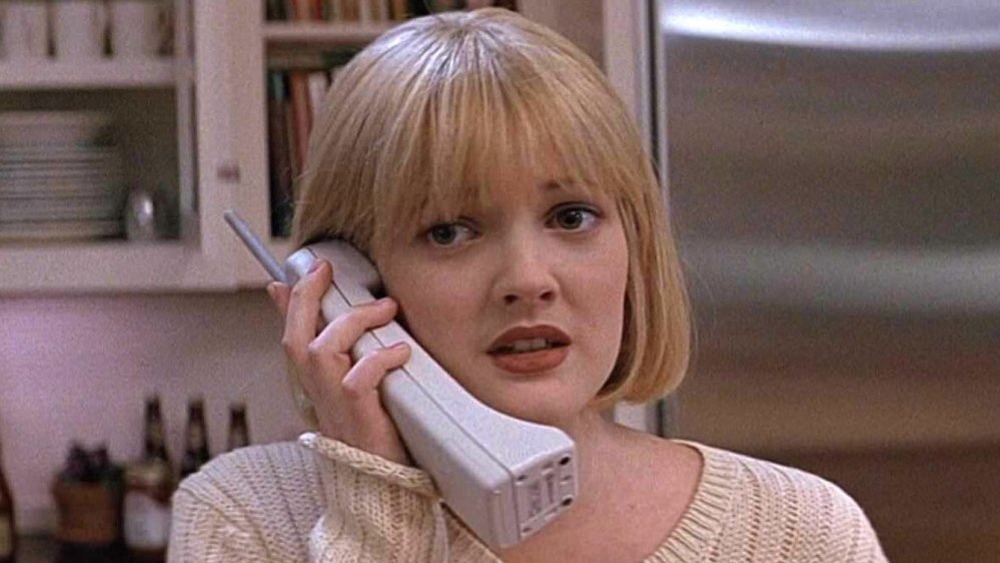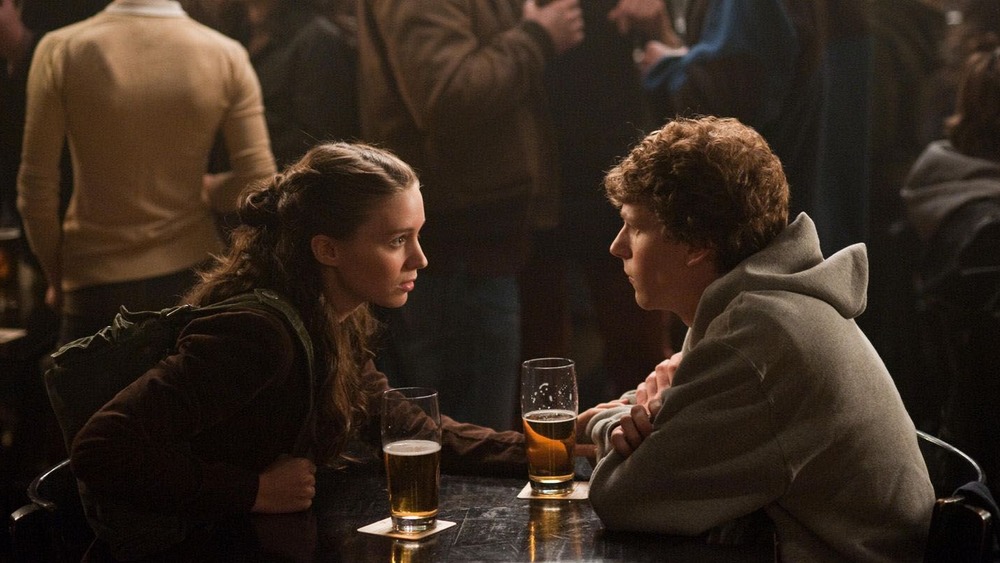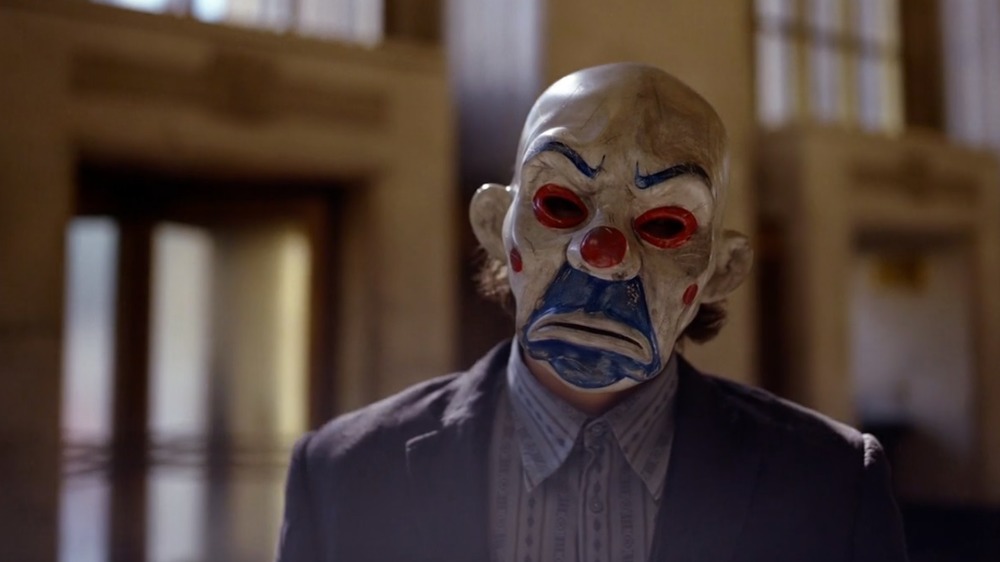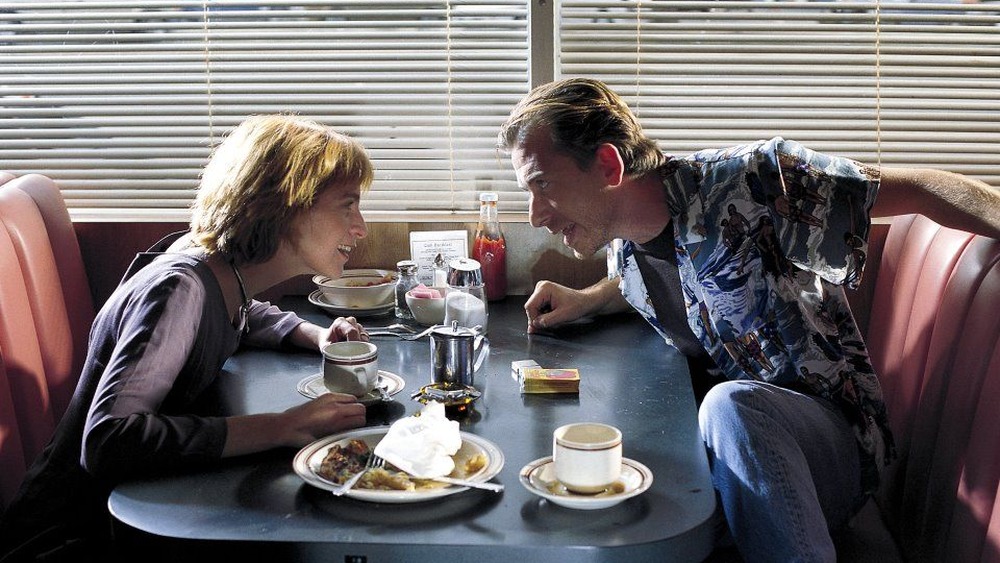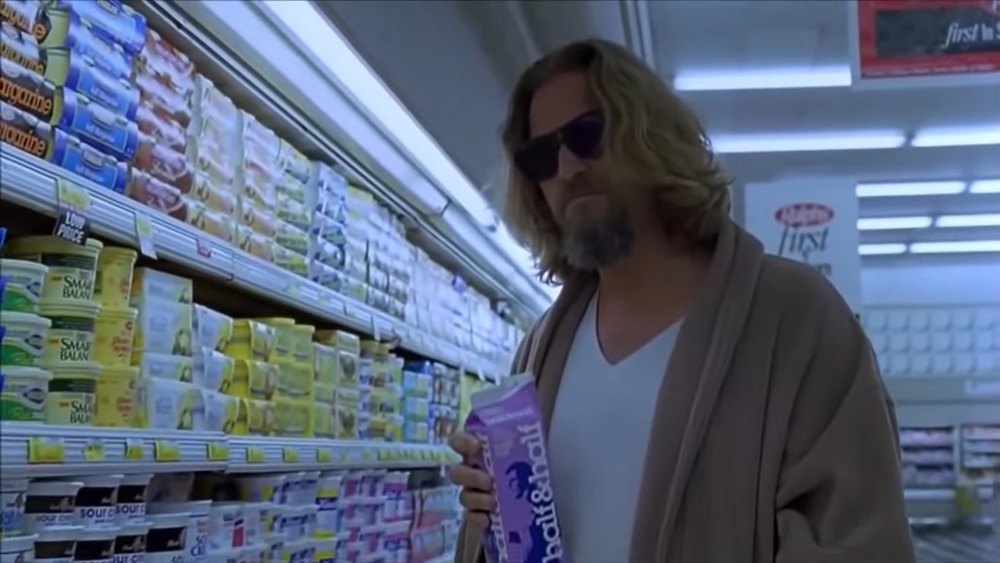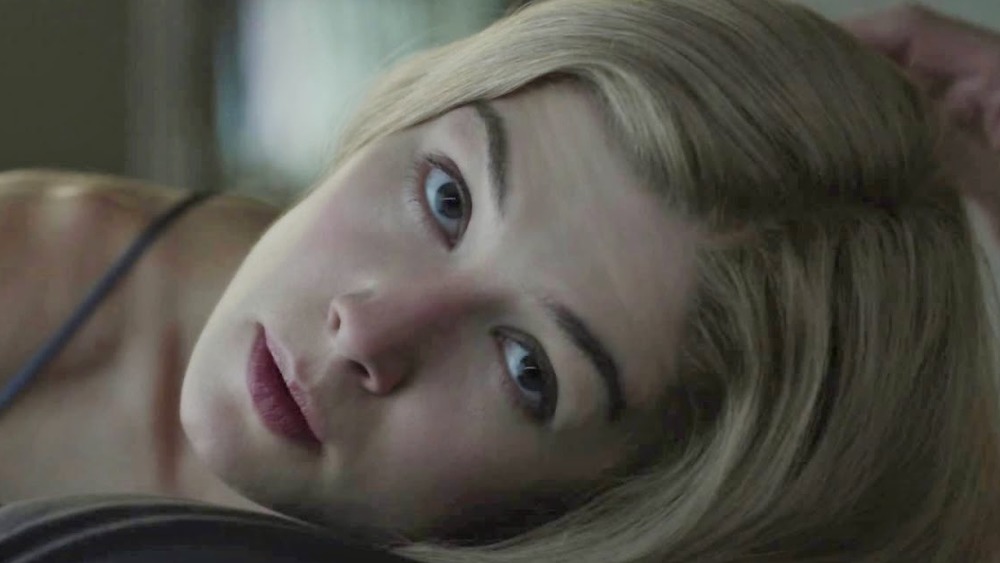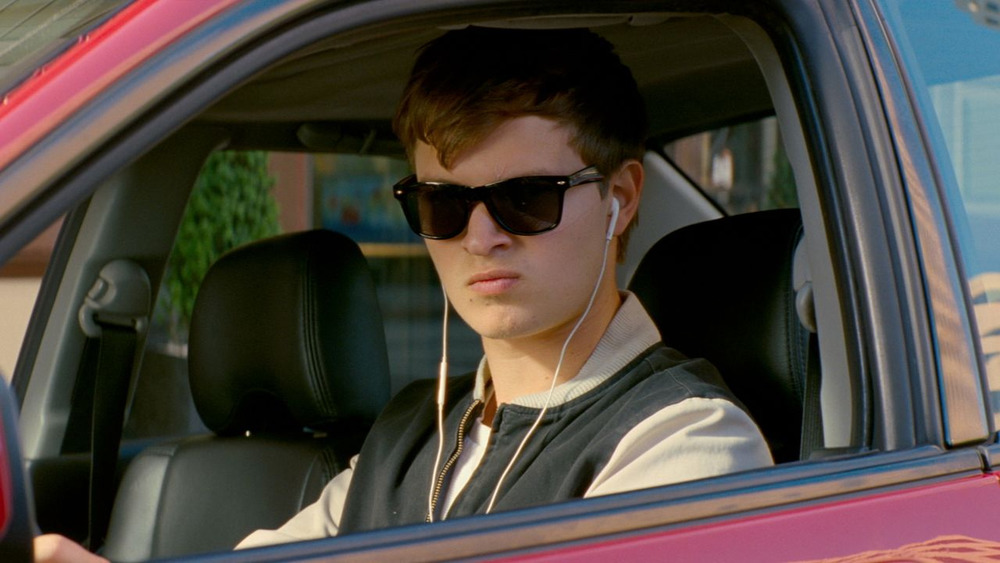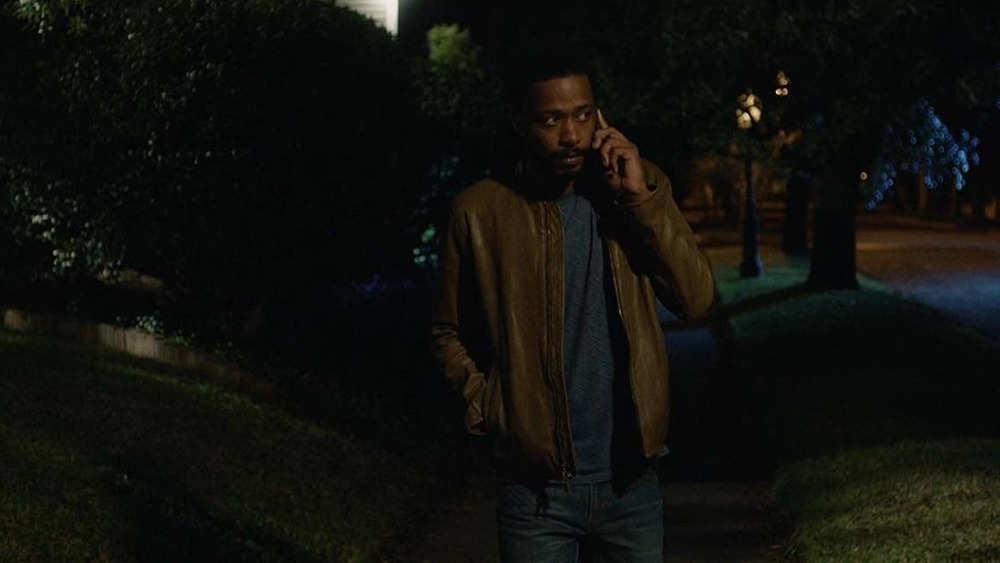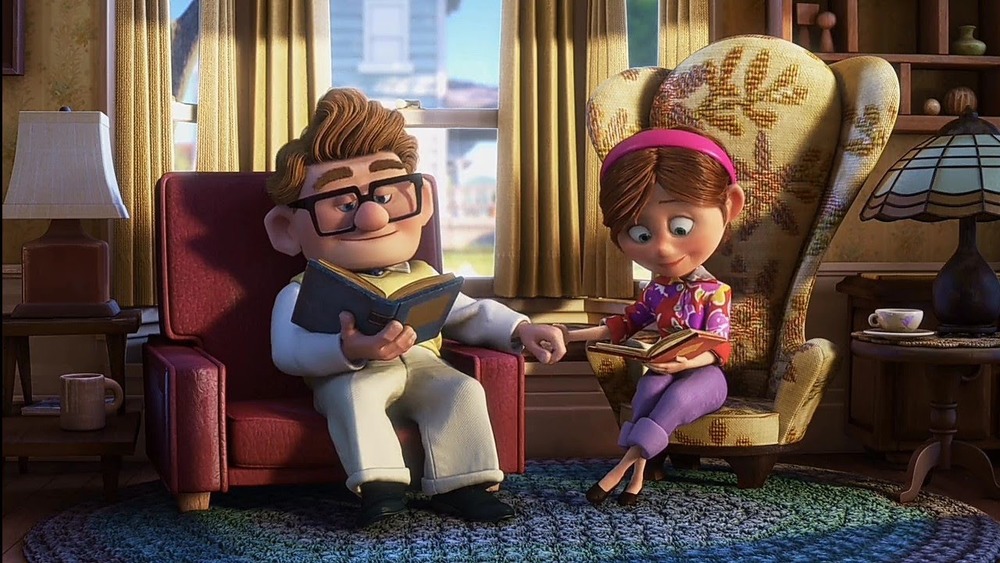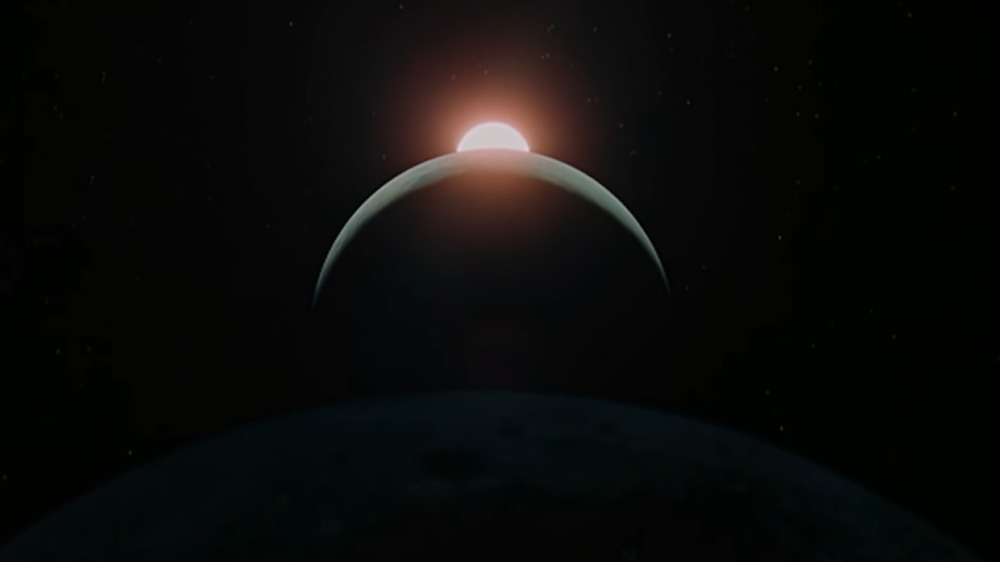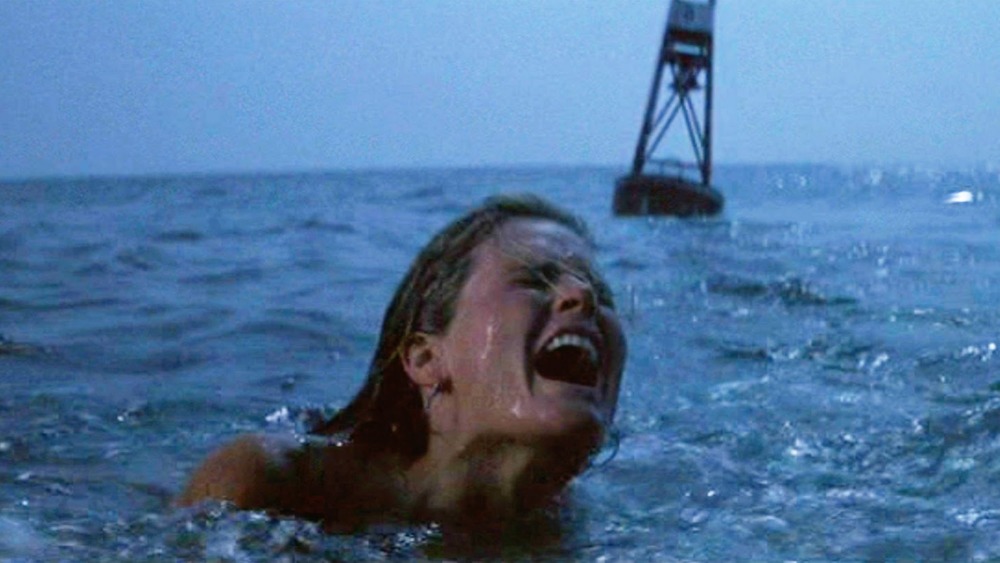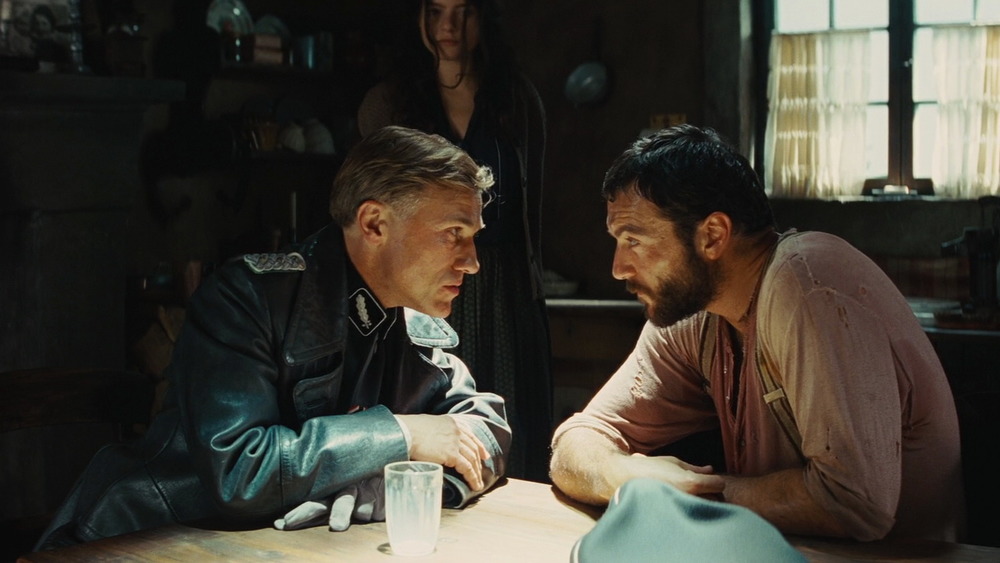The Best Opening Sequences In Movie History
Great films become great thanks to the impression they leave on their audiences, and there's no better way to make an incredible first impression than with a spectacular opening sequence. When a movie grabs the audience's attention right away, whether it's with an extended sequence or a short vignette, viewers will get hooked on the story immediately. As result, this makes the opening of any movie of the utmost importance.
An unforgettable opening to a film can thrill, shock, scare, excite, or mystify the audience, but ultimately, it has to be able to practically stand on its own, almost as if it's a short film separate from the rest of the plot. From murder scenes to daring heists to intimate love stories, here are some of the best opening sequences in cinematic history, carefully crafted by many of the best directors, actors, and writers of all time. Light spoilers for some of these films ahead!
Scream's opening sequence is a horror movie classic
Wes Craven's 1996 horror-comedy classic Scream is all about a string of murders in the fictional small suburb of Woodsboro, California, and in the midst of these killings, teenager Sidney Prescott (Neve Campbell) is still dealing with the aftermath of her mother's murder one year earlier. However, before she can grapple with the loss of her mom, Sidney ends up targeted by the same killer, who leaves a trail of blood and devastation in his wake, starting with the murder of Sidney's classmate, Casey Becker (Drew Barrymore).
In one of the most iconic opening sequences in horror history, Casey, home by herself while her parents are out, receives a series of phone calls from an odd stranger who tries to make her answer questions about horror movies. However, when the call turns sinister — and Casey's boyfriend is murdered in front of her — Casey fights for her life, ultimately losing in an extremely dark twist. Barrymore was initially offered the role of Sidney, but she requested to play Casey, saying it would throw the audience off balance if she portrayed somebody who died in the first few minutes. Ultimately, her instincts were exactly correct.
The Social Network starts with a rapid-fire bar fight
David Fincher's 2010 biopic, The Social Network, may have taken some liberties with Mark Zuckerberg's real-life antics from time to time, but the adjustments from Fincher and screenwriter Aaron Sorkin (who won an Academy Award for the script) certainly create a compelling tale. Right from the beginning, Fincher makes no secret of the fact that his on-screen Mark Zuckerberg, played by an Oscar-nominated Jesse Eisenberg, is a difficult, pompous jerk — a quality displayed to perfection in the film's sharp, fast opening scene.
While at a bar with his girlfriend, Erica (Rooney Mara), Zuckerberg broods over his beer, obsessing over Harvard's prestigious, selective Final Clubs, as Erica grows visibly dissatisfied with his behavior. Eventually, after a verbal sparring match where Zuckerberg insults Erica's intelligence and Erica compares dating him to "dating a Stairmaster," she storms out ... but not before delivering one of the cruelest brush-offs in movie history. She tells Mark that he's unappealing to women not because he's a "nerd" but because he's a horrible person. Fincher went to great lengths to deliver this rapid-fire, dialogue-based scene, requiring over 99 takes, but the end result was well worth the trouble.
The Joker's bank heist kicks off The Dark Knight with a bang
Christopher Nolan's three-film take on Gotham's Caped Crusader, known as the Dark Knight trilogy, are all standouts in the Batman canon. But the middle film of the franchise, 2008's The Dark Knight, is the undisputed champion of the series. Beloved for its clever storytelling, Nolan's innovative camerawork and direction, and the late Heath Ledger's earth-shattering and award-winning performance as the Joker, The Dark Knight has more than earned its place as one of the best Batman movies around, starting with its startling opening sequence.
As a group of masked robbers pull off a dangerous, involved bank heist, all dressed as clowns, they discuss their enigmatic, mysterious boss, known only as "the Joker," who's apparently nowhere to be found. Though the robbers have apparently agreed to share their bounty in advance, they all start to quietly turn on one another, picking off men left and right until only a few remain. However, after a particularly stunning stunt with a school bus, Ledger's Joker unmasks himself, killing the last of his men — and the bank manager for good measure — before disappearing into Gotham, giving the audience the exact idea of what to expect from the villain for the rest of the film.
Pumpkin and Honey Bunny get Pulp Fiction off to a fantastic start
Told throughout a non-linear series of vignettes focusing on seemingly disparate characters that eventually merge together as the film goes on, Quentin Tarantino's 1994 classic Pulp Fiction is home to some of the most memorable lines and scenes in film history, as well as one of its very best opening scenes.
The film opens in a nondescript Los Angeles diner, settling to focus on two characters, a young man (Tim Roth) and young woman (Amanda Plummer) discussing their situation at a rapid-fire pace. Ultimately, the audience learns that the man, "Pumpkin," and the woman, "Honey Bunny," are planning to rob the diner, despite weighing potentially better options like banks. As they hold up the little restaurant, guns blazing, that's when surf music starts to blare, announcing the beginning of the movie.
However, this opening sequence is a bit different from others in that it makes a return later in the movie. This apparent one-off scene with Pumpkin and Honey Bunny eventually proves crucial, even bringing Vincent Vega (John Travolta) and Jules Winnfield (Samuel L. Jackson), two hitmen who cross several storylines, into the fray as the film comes to a close.
Black Mamba visits Copperhead in Kill Bill Vol. 1
Kill Bill: Volume 1, the first of two of installments in Quentin Tarantino's revenge series starring Uma Thurman as a wronged mother and bride, actually opens with a brief flashback to Beatrix Kiddo's (Thurman) attempted murder. However, after this brief interlude, viewers are thrown directly into the action in the movie's first real scene.
In a brightly colored, cheerful suburb, Kiddo (aka the Bride / Black Mamba), seemingly recovered and driving the world's most vulgar truck, heads to the home of a homemaker (Vivica A. Fox) who goes by the name of Jeannie Bell. But her real name is Vernita Green, and under the codename Copperhead, she was once a part of the group that tried to kill the Bride.
After the two spar in a vicious knock-down, drag-out fight, the two call a temporary truce when they're interrupted by the entrance of Vernita's young daughter, Nikki (Ambrosia Kelley). Not wanting to kill Vernita in front of her kid, the Bride agrees to finish their feud later that night, but when Copperhead pulls a fast one, the Black Mamba is forced to strike. Tragically, Nikki ends up witnessing the moment her mother dies at the Bride's hands. Not only does Kill Bill: Volume 1 feature a perfect action-packed opening, it also sets up a potential Tarantino sequel, giving Nikki her own thirst for revenge.
Introducing the Dude
A memorable character deserves an equally memorable opening sequence, and luckily for the Dude (Jeff Bridges), Joel and Ethan Coen made sure that came to pass in 1998's The Big Lebowski. A clever modern-day take on the famous detective noir The Big Sleep, The Big Lebowski pits two Jeffrey Lebowskis — Bridges' slacker and David Huddleston's millionaire — against each other as the richer Lebowski's wife goes missing, drawing the robe-clad, White Russian-drinking Dude into an enormous, unexpected scheme.
However, when the movie opens, viewers don't see the Dude at all at first. Instead, we watch a tumbleweed moving across the California landscape, accompanied by a voiceover from Sam Elliott. He's talking about the Dude himself, describing him as a man who doesn't make a "whole lot of sense," although he's a pretty interesting character and maybe even a hero. Finally, we get a glimpse of the Dude in his signature robe, sunglasses, and sandals, chugging a carton of half-and-half in a Los Angeles grocery store. As he pays for his groceries by check, not only do viewers completely understand the Dude himself, but the tone of the movie is set up perfectly, and one of film's most iconic characters comes to life before our eyes.
Gone Girl begins with the mysteries of marriage
Based on the novel of the same name by Gillian Flynn (who also adapted the screenplay for director David Fincher), the 2014 thriller Gone Girl serves as a searing indictment of marriage, relationships, and trust. As the film's narrative begins, Nick Dunne (Ben Affleck) is dreading his fifth wedding anniversary, but when he returns to his home that morning, he discovers that his beautiful, inscrutable wife, Amy Elliott-Dunne (Rosamund Pike), is gone, with signs of a struggle left behind. Soon, Nick becomes the primary subject in Amy's disappearance and possible murder, leaving a huge mystery in her wake.
Ultimately, there's a lot more to Amy's kidnapping than meets the eye, and remarkably, the film's beginning and end sequences — which are the same — tell very different stories. In the film's first shots, the audience sees Nick's hand stroking his wife's hair, with a closeup on Amy, as Nick intones in a voiceover, "When I think of my wife, I think of the back of her head." He then uses some pretty violent language to wish that he could understand the inside of her brain. As he asks what the two have done to each other, the film begins, and then as Nick and Amy's story comes to a close, the opening repeats, reminding us that their mutual destruction is a never-ending, painful cycle, doomed to repeat itself.
Baby Driver's opening features the perfect playlist
Edgar Wright's films – from the Cornetto trilogy (Shawn of the Dead, Hot Fuzz, and The World's End) to Scott Pilgrim vs. the World – are imbued with a strong sense of Wright's humor and style. Naturally, 2017's Baby Driver is no exception. Led by Ansel Elgort as Baby, a mostly silent and indebted getaway driver for a gang of criminals led by Kevin Spacey's Doc, Baby Driver watches as our hero falls in love for the very first time, risking everything to escape his life of crime, protect the few people he loves, and begin a new life.
Though he rarely speaks throughout the film, Baby utilizes a different form of communication — music. As the film begins, his cohorts pull off a bank robbery while Baby waits outside in the car. He uses his free time to map out the perfect playlist, timing his death-defying car chase to a specific soundtrack that perfectly underscores the movie. He's a man of few words, but Baby — and by extension, Wright — has pretty great taste in music, often depending on his headphones to shut himself off from the outside world. And in this thrilling opening scene, we see how he deploys music even in the craziest moments of his life.
There's a horrific kidnapping in Get Out's opening sequence
Jordan Peele's 2017 directorial debut Get Out proved to be an immediate and smashing success, earning the comedian turned writer-director an Academy Award for Best Original Screenplay and transforming him into one of Hollywood's brightest creators. But when fans think about the "social horror" thriller, they often think of the film's huge twist rather than its stunning opening scene.
As the film opens, audiences meet a mostly unseen man trying to find his way out of an unnamed, leafy suburb, complaining to a friend on the phone about being stuck in the outer reaches of white suburbia and even saying that he feels like he's in a "hedge maze," one of the film's many references to Stanley Kubrick's The Shining. However, the scene turns on a dime when a car starts following the on-screen stranger, and within minutes, a masked assailant has knocked the man out and dragged him into the mysterious white car, all set to "Run Rabbit Run." The man's identity is revealed much later in the film, making this scene indispensable to the story, though it initially seems like a throwaway moment, proving that Peele knew exactly what he was doing with this tricky, twisted tale.
Up broke our hearts with a tragic love story
Pixar's movies always know how to tug audiences' collective heartstrings, and in their 2009 classic, Up, the animation studio turns on the waterworks before the main story of the movie even begins. Though the rest of the film centers on cantankerous widower Carl (Ed Asner) and his reluctant adventure alongside young Russell (Jordan Nagai), viewers must first learn the reason behind Carl's bad attitude. As it turns out, Carl was once a happy man, but everything changed after losing his beloved wife, Ellie.
In a silent, stunning montage, Up chronicles the early days of Carl and Ellie's blissful relationship, and even through hurdles like infertility and illness, their love for one another never seems to lessen. However, there's one thing Carl simply can't overcome, and that's losing Ellie, who spends her final moments asking Carl to continue the scrapbook they always worked on together. Carl ends up fulfilling Ellie's legacy, but it's easy to understand why this reclusive widower doesn't want to stretch beyond his comfort zone at first.
2001: A Space Odyssey begins with an epic soundtrack
With an imperious title like 2001: A Space Odyssey, Stanley Kubrick's 1968 science fiction classic is bound to have a pretty epic opening, and Kubrick certainly doesn't disappoint, offering the audience an incredible lesson in restraint and minimalism.
In the film's iconic first scene, the movie's now-beloved score swells to great heights as the Sun spectacularly rises in alignment with the Moon and the Earth. Amidst the pounding drums and trumpets of Richard Strauss' "Thus Spake Zarathustra," Kubrick's name flashes onto the screen, letting audiences know what they may be in for.
Though this opening gives away literally nothing about the film, it's a masterful example of what simple imagery and an iconic soundtrack can create. 2001: A Space Odyssey remains a classic, and decades after its release, audiences are unlikely to forget about this simple and stunning introduction to the beloved movie.
Jaws' opening sequence is one of cinema's all-time scariest scenes
Steven Spielberg has long been regarded as one of the finest directors in modern film history, and movies like 1975's Jaws are why he's viewed so highly. Adapted from Peter Benchley's 1974 novel of the same name, Jaws tells the story of a small beach town besieged by a great white shark. Faced with an enormous monster killing the town's citizens and visiting tourists, the town's police chief, a marine biologist, and a shark hunter — played respectively by Roy Scheider, Richard Dreyfuss, and Robert Shaw — must search for the shark, hoping to kill it and save the town.
The entirety of Jaws is a thrill ride, but its terrifying opening scene still remains one of the movie's most famous moments. After a beach party, a young woman decides to take an evening dip in the ocean, unaware of the danger beneath the waves. As the shark approaches, Spielberg uses a brilliant tactic reportedly brought on by budget issues, which is to film from the shark's point of view, pairing the now-famous shot with John Williams' hauntingly perfect score. Jaws may have been tough to shoot, but Spielberg's approach to the opening scene remains untouchable.
The opening of Inglourious Basterds is unbearably tense
Quentin Tarantino certainly knows how to grab an audience's attention right from the start of his films, and everything he ever learned about a great opening scene came to a head in 2009's Inglourious Basterds.
In a sequence that lasts slightly less than 20 minutes, audiences are introduced to Colonel Hans Landa (Christoph Waltz), an SS officer known for his particular skill of "hunting" Jewish refugees. After a title card announces that the film opens once upon a time in "Nazi-occupied France," Landa and his cronies introduce themselves to a humble French farmer, Perrier LaPadite (Denis Ménochet). Though Landa presents himself as a friendly and perhaps even sweet caller, when he switches from French to English, his intentions become terrifyingly clear. He's here to uncover the Dreyfus family, who the farmer is hiding underneath the floorboards.
Not only is this opening scene a powerhouse performance from Waltz — an Austrian-German actor whose Hollywood breakthrough role earned him a Golden Globe, a Screen Actor's Guild Award, and an Academy Award for Best Supporting Actor — but it's a master class in dramatic tension, directing, and screenwriting from Tarantino. Sure, the rest of Inglourious Basterds makes up one of Tarantino's top films, but this opening scene is one of his very best accomplishments.
